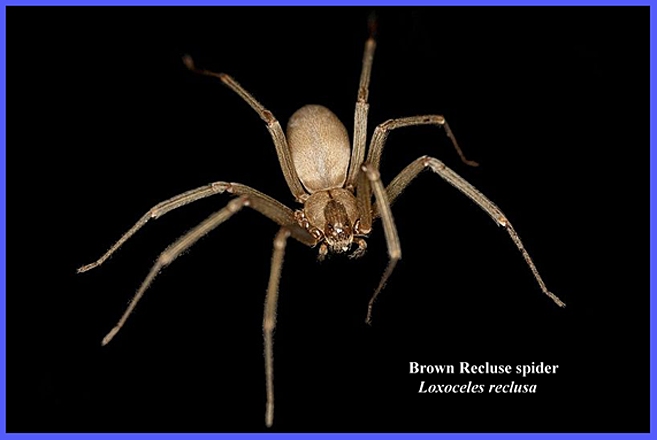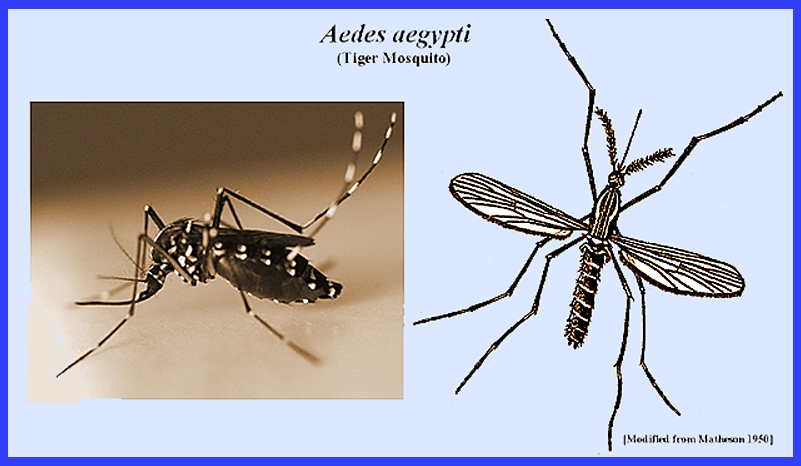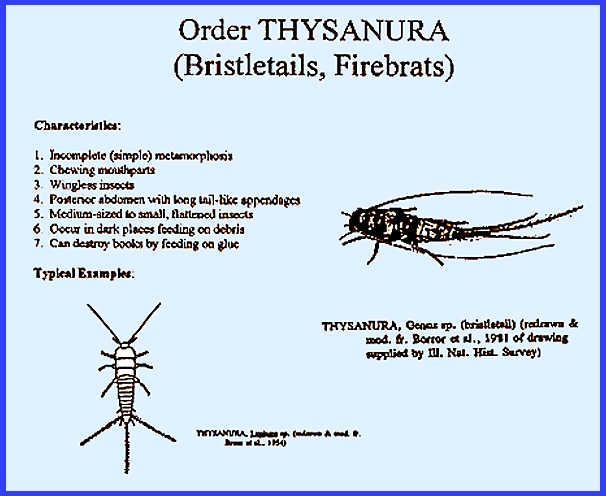File: <miscpoisonous.htm> <Medical
Index> <General Index> Site Description Glossary <Navigate
to Home>
|
POISONOUS & IRRITATING ARTHROPODS (Contact) Please CLICK on
underlined links & photos for
details:
There are many records dating back to the 1800's of
arthropods injuring and/or inflicting poisons when in contact with humans and
other animals. Their mere presence
may cause irritations and allergic responses. Matheson (1950) is one of the few medical entomology authors
who has presented detailed information on this subject. He noted that secretions of the salivary
glands of arthropods when entered into body wounds can prevent blood
coagulation that can cause hemolysis, produce paralysis or act as
irritants. Also, when insects draw
blood there is always the possibility that the proboscis may contain
pathogens, which if entering the blood stream serious health problems can
result. Disinfections of such wounds
is highly recommended. Order: Scorpiones (Scorpionida) -- scorpions: These animals have a well marked
cephalothorax and segmented abdomen that is equipped with a sting and poison
gland at the posterior end. They can
be dangerous in warmer regions.
Chelicerae and pedipalps are both chelate. They have book lungs.
They feed on other arthropods.
They are also viviparous as they bear living young. See Inv150 & Inv151 for examples: Some arthropods use venom as a weapon to kill or paralyze
when they are threatened. Humans
frequently encounter wasps, bees, ants, arachnids, millipedes or centipedes,
etc. that may attack especially if nesting sites are threatened. Their trailing abdomen that is equipped
with a sting easily identifies large arthropods such as scorpions (See: Scorpion). Scorpions are especially common in
tropical and subtropical areas where some species can attain almost a food in
length. The sting can be very painful
but rarely is it fatal. However, one
species in Mexico, Centruroides suffusus
Pocock, has been a threat especially to young children, with death ensuing
rapidly after a sting. The stings of
yellow jacket wasps and Africanized bees defending their nests not
infrequently kill full-grown humans. Class: Arachnida: Order Araneae includes the true
spiders. Segmentation is obscure in
the abdomen and there are no obvious appendages except 3-4 pairs of
spinnerets at the posterior end of the abdomen that are modified abdominal
appendages. Several examples of
spiders may be seen in the following diagrams Inv143 - Inv147: Although spiders are generally feared they do not bite
readily, but they all possess poison glands and the bites of some species can
cause severe irritation and even tissue destruction. The Black Widow spider, Latrodectus mactans
Fab. is common in warmer parts of the temperate zone
where fatalities sometimes result from its bite. It is easy to recognize by a jet-black color, a hourglass
pattern on the underside of its abdomen and a web that is irregular and
without pattern. Matheson (1950)
described the symptoms from the bite as "acute pain, localized and
general, profuse perspiration, restlessness, nausea, vomiting, labored
breathing and constipation.:" In
tropical areas other species of Latrodectus
are considered very dangerous. The Brown Recluse or "Violin" spider, Loxosceles
reclusa, like the black widow, has venom that causes necrosis
of body tissues, which may require drastic surgical removal of the area
around the bite. The common name,
"violin spider"
refers to a marking on the top of the cephalothorax that resembles a violin. Another species that has spread to other parts of the
world is the Mediterranean Recluse spider, Loxosceles
rufescens (Dufour). Also,
the Desert Recluse spider, Loxosceles
deserta Gertsch occurs in the southwestern United States, where
its preference for wild habitats generally keeps it away from human
habitation. Another group of spiders, the Tarantulas (Avicularia spp.), have large species
with a hairy appearance that tends to frighten people and animals (See: Avicularia sp.). Myths about their ferociousness were
rampant during the Middle Ages.
However, they are quite tame if not provoked (Baerg 1923) and can even
be trained as pets. Tarantulas are
abundant in tropical areas, but they extend well into the Temperate Zone.
They are especially active at night as in the Ozark Region of Arkansas,
United States where large numbers can crawl all over sleeping campers, but
without inflicting bites. Subphylum: Myriapoda, Class: Chilopoda includes the centipedes. They are dorso-ventrally flattened. Their body consists of a head and trunk
but there is no thorax nor abdomen. The
head bears one pair of antennae, one pair of mandibles, one pair of
maxillipedes with poison glands at the bases and ducts leading to pointed
tips (Note: these are absent in the
Diplopoda). There are two pairs of
simple eyes called pseudocompound eyes.
They have maxillae on the 1st and 2nd segments. The trunk bears uniramous appendages and
there are 15 to 175 segments. See
examples at Inv141. Centipedes are also frightening to behold and have caused
undue alarm, They possess poison glands although they rarely bite and if so
the venom is not very toxic, serving primarily for food digestion. They are recognized by their many legs on
a long body with a distinct head and a pair of many jointed antennae (See: Scolopendra obscura). Most species are terrestrial, preying on
small animals in dark places under logs, leaves and stones (Matheson
1950). Subphylum:
Myriopoda, Class: Diplopoda includes the millipedes. These are cylindrical animals with a head
and trunk that is the same as in the Chilopoda. The head appendages include antennae, mandibles, one pair of
maxillae (instead of 2 pair as in the Chilopoda) and pseudocompound eyes on
the head. The trunk has 25-100 or
more segments with each segment bearing two pair of appendages. A fusion occurs between two segments all
along the body except on the first trunk segment. See example at Inv142. Millipedes are terrestrial arthropods with a wormlike
appearance and many small legs (See: Millipede).
They have a distinct head with the next four segments being their
thorax. The remaining segments each
bear two pairs of legs. There are no
poison glands on their mouthparts, but many species have glands on some
segments that produce an irritating liquid, which they can eject for some
distance. This liquid is an irritant
that can cause blindness if reaching the eyes (Burtt 1947). There are also insects that have special hairs, which can
cause irritation or allergic reactions (See:
Io Moth & Browntail
Moth). Some caterpillars of moths
and beetles have structures that cause considerable irritation. Matheson (1950) lists the following
Lepidoptera families that belong to this group: Eucleidae, Megalopygidae, Saturniidae, Thaumetopoeidae, Arctiidae, Noctuidae and
Nymphalidae. The irritation comes
from special spines or barbed hairs that have poison glands. The barbs can penetrate skin and the
poison will spread to produce a rash.
Gilmer (1925) distinguishes two types of poison gland hairs or setae
as primitive and modified. The
primitive type has a single seta with a gland cell that opens directly
through a pore canal into the hollow of the seta. The seta contains the poisonous secretion of the gland
cell. These setae retain their
urticating properties long after the caterpillar sheds them and their
efficacy is not affected by drying.
The modified hair type is found among caterpillars of the Lymantriidae
and some Thaumetopoeidae (e.g, brown-tail moth Euproctis phacorrhoea). Other minute structures occur on
caterpillars that can produce rashes.
Matheson (1950) listed a some of the more important caterpillars that possess urticating
structures: URTICATING CATERPILLARS (List derived from Matheson 1950)
Coleoptera
include the beetles that have biting mouthparts; the fore wings are modified
to form firm elytra. The hind wings
are membranous and folded beneath the elytra, and they are usually reduced or
absent. The prothorax is large and
the mesothorax is greatly reduced.
They have complete metamorphosis.
The larvae are campodeiform or eruciform or generally apodous. Some beetles that belong to the families Meloidae and
Staphylinidae can also cause bodily irritation. The Meloidae, or "Blister
beetles" have cantharidin in their body fluids. The extract has been used in small amounts
as a diuretic and a stimulant to the urinary and reproductive organs. Blister beetles populations can assume
large numbers and do considerable damage to plant foliage. The Staphylinidae,
or "Rove beetles", have a
genus, Paederus in which there
are species that cause blisters if crushed on the body. Problematic species are Paederus fuscipes (Orient), P. sabaeus (South Africa), P. cribripunctatus (East Africa), P. peregrinus (Java), P. amazonicus and P. columbinus (Brazil), and P. irritans (Ecuador) (Matheson
1950). The resulting blisters are
often slow to heal, so it is best to avoid handling both groups if
possible. However, the benefits
derived from staphylinids serving as predators of other harmful insects may
outweigh their harmful effects (Moore
& Legner 1973) The Apocrita of the order Hymenoptera are
included here. The second abdominal segment is constricted to form a narrow
waist or petiole, the first segment being firmly joined with the thorax. Larvae are apodous when full-grown. Ichneumon flies have slender curved antennae,
and there is a stigma on the wing. The ovipositor is generally long and
projects forward from the tip of the abdomen. The larvae of Lepidoptera and
of sawflies are their usual hosts. Insects that have an ability to sting their prey and
humans, belong primarily in the order Hymenoptera, which includes the bees
and wasps. Families of the order
usually involved are Apidae (including Bombidae), Vespidae, Sphecidae,
Mutillidae and Formicidae. In the
honeybee the female workers have a sting with sufficient poison to inflict
considerable pain, even though a bee deploying the sting results in its
death. The hybridization of an
African with an Italian strain of honeybee has produced a viscious hybrid,
resulting in the death of people in the Americas (See: Africanized bees) The stings of hornets, bumblebees
and wasps are equally potent although the insect does not die after an
attack, but can continue to sting repeatedly. There are many deaths annually among humans and animals that
can be attributed to stingings from wasps especially. The ants
exist as many species and they are numerically very abundant. Polymorphism is pronounced. The various social orders in the family
have developed around a caste system.
This includes a queen, workers, soldiers, etc. The workers can appear in different shapes
and forms as influenced by nutrition and care among individuals of the
colony. All of the workers are
wingless. Some ants, such as the fireant, whose stings are very potent,
especially if administered by large numbers in an ant colony. The ponerine ant, Paraponera clavata Fab., of South
America will attack if disturbed, inflicting severe stings (Bequaert 1926). The abdomen
in this group is rather soft and able to take on a great deal of food, which
other members of their colony are able to solicit. They obtain it by stroking the bearer who then regurgitates the
food. Colony
Establishment. -- New males and females in the colony develop wings, after
which they swarm and mate. The
females fall to the ground and chew off their wings, while the males
dies. The female then finds a
suitable place to construct a cell into which she will lay eggs. While waiting for the eggs to hatch, the
female does not feed. She derives
nourishment by absorbing internal body parts, such as wing muscles, etc. Some species
such as the driver and army ants are nomadic. Conspicuous nests in the ground may be 2.7 meters or more below
the surface. Ants also may live in
oak acorns, dry stems, etc. Their
food includes seeds, dead insects, aphid honeydew and household foods. They may even take aphids into their nests
for the winter where they are attended. Ant control
in houses is possible with poison bait traps. The treatment of concrete foundations with insecticides is a
more drastic approach. Allergies of varied intensity are associated with the
encounter of many different kinds of insects. Prolonged exposure to the allergen, such as in the bite of Aedes aegypti,
can result in immunity to its effects (McKinley 1929). Some people with special skin properties
are also little affected by some mosquitoes.
Serious reactions of a prolonged rash can result from exposure to
insects that are generally considered harmless, such as occurs with some
species in the primitive Thysanura order of bristletails and silverfish
(See: Thysanura)
= = = = = = = = = = = = = = = = = = = = Key References: <medvet.ref.htm> Baerg, W. J. 1922. Regarding the habits of tarantulas and the effects of their
poison. Sci. Mon. 1`4: 482-89. Baerg, W. J. 1923.
The black widow; its life history and the effects of its poison. Sci. Mon. 17: 535-47. Baerg, W. J. 1924.
The effect of the venom of some supposedly poisonous arthropods. Ann. Ent. Soc. A.er
17: 343-52. Benson, R. L. &
H. Semenov. 1930. Allergy in relation to bee sting. J. Allergy 1: 105-16. Bequaert, J. C. 1926.
Medical report of Rice-Harvard expedition to the Amazon. Cambridge Univ., Mass. Beyer, G. F. 1922.
Urticating and poisonous caterpillars. Quart. Bull. La. St. Bd. Health 13: 161-68. Burtt, E. 1947.
Exudates from millipedes with particular reference to its injurious
effects. Trop. Dis. Bull 44: 7-12. Chamberlain, R. V. &
W. Ivie. 1935. The black widow spider (Latrodectus mactans) and its varieties
in the United States. Univ. of Utah
Bull. 25. Comstock, J. H. 1940.
An Introduction to Entomology,
9th Rev. ed. Comstock Publ. Co., Inc.,
Ithaca, New York. 1064 p. Cornwall, J. W. 1916.
Some centipedes and their venom.
Ind. J. Med. Res. 31: 541-57. De Villiers, P.
C. 1987. Simulium
dermatitis in man: clinical and
biological features in South Africa.
So. Afr. Med. J. 71: 523-25. Ewing, H. E.
1928. Observations on the
habits & injury caused by bites or stings of some common North American
arthropods. Amer. J. Trop. Med. 8: 39-62. Gilmer, P. M. 1925.
A comparative study of the poison apparatus of certain lepidopterous larvae. Ann. Ent. Soc. Amer. 18: 203-39. Hoffman, C. C. & L. Vargas. 1935.
Contribuciones y conocimiento de los venenos de los alacranes
mexicanos. Bol. Inst. Hig. Mex.
2(4): 182-93. Legner, E.
F.
1995. Biological
control of Diptera of medical and veterinary importance. J. Vector Ecology 20(1): 59-120. Legner, E. F. 2000.
Biological control of aquatic Diptera. p. 847-870.
Contributions to a Manual of Palaearctic Diptera, Vol. 1, Sci. Herald, Budapest. 978 p. Matheson, R. 1950. Medical Entomology. Comstock Publ. Co, Inc. 610 p. McKinley, E. B. 1929.
The salivary gland poison of the Aedes
aegypti. Proc. Soc. Exp.
Biol. Med. 26: 806-809. Mills, R. G. 1923. Observations on a series of cases of dermatitis caused by a
liparid moth, Euproctis flava
Bremer. China Med. J. 351-71. 106. Moore, I. & E. F. Legner. 1973.
Beneficial insects: neglected
"good guys." Environment
Southwest 454: 5-7. Norman, W. W. 1896.
The poison of centipedes, Scolopendra
morsitans. Proc. Texas
Acad. Sci. pp. 118-19. Parlato, S. J. 1929. A case
of coryza and asthma due to sand flies (caddis flies). J. Allergy 1: 35-42. Pavlovsky, E. N. 1927.
The cutaneous poison of the beetle, Paederus
fuscipes. trans. Roy. Soc.
Trop. Med. Hyg. 20: 450-51. Roche, A.J., N.A.
Cox, L.J. Richardson, R.J. Buhr, J.A. Cason, B.D. Fairchild, and N.C.
Hinkle. 2009. Transmission of Salmonella to Broilers by Contaminated Larval and Adult
Lesser Mealworms, Alphitobius diaperinus
(Coleoptera: Tenebrionidae). Poultry Science 88: 44-48. Service, M. 2008.
Medical Entomology For Students.
Cambridge Univ. Press. 289 p Smithers, R. H. N. 1944.
Contributions to our knowledge of the genus Latrodectus in South Africa. Ann. So. Afr. Mus. 36:
263-313. Tyzzer, E. E. 1907. The pathology of the brown-tail dermatitis. J. Med. Res. 16: 43-64. Verbeek, F. A. T.
H. 1930. De
Canthariden op Java. Tectona 23: 304-08. Verbeek, F. A. T. H. 1932.
De ontwikkelings-stadia Van Mylabris
en epicauta in de tropen. Tijdschr. v. Ent. 75
(Sup.): 163-69. Vetter, R.S., N.C. Hinkle, and L.M.
Ames. 2009. Distribution of the Brown Recluse Spider (Araneae: Sicariidae)
in Georgia with Comparison to Poison Center Reports of
Envenomations. J. Med. Entomol. 46(1): 15-20. Walsh, D. 1924.
Insect bites and stings. J.
Trop. Med. & Hyg. 27: 25-26. Wilson, W. H. 1904.
On the venom of scorpions. Records
of the Egyptian Government School of Medicine, Cairo 2: 7-44. |



















